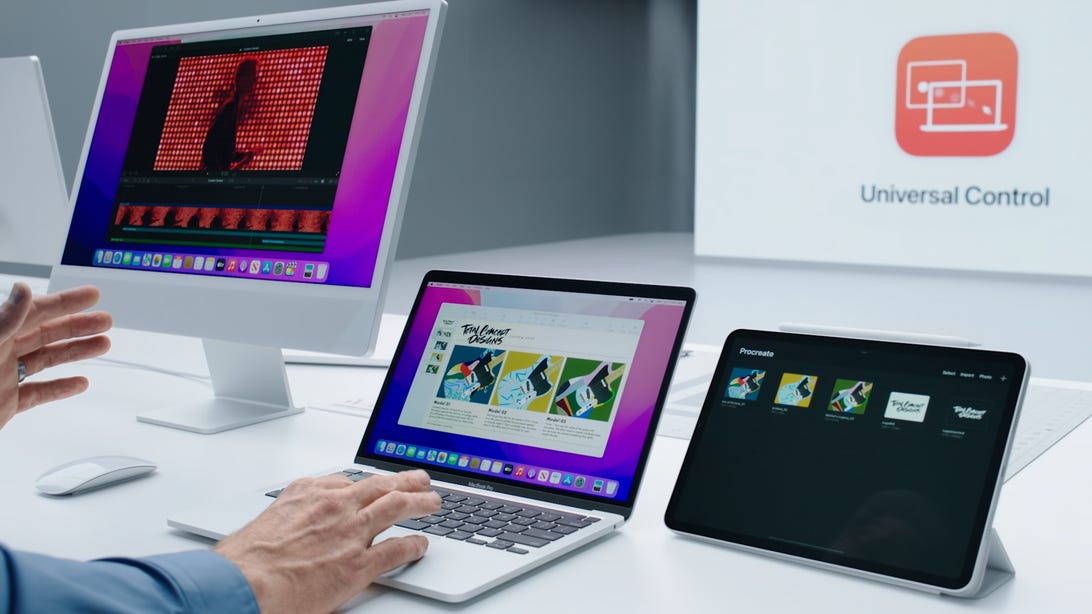
Screenshot from Apple Event featuring Universal Control across iPad, MacBook and iMac.
Screenshot/Apple
After a stint in beta, the Universal Control and Spatial Audio features are now available to all Mac users via the new MacOS 12.3 update. The Universal Control feature is still marked under beta, however, meaning users might run into issues when trying to seamlessly move windows between iPad OS and MacOS.
Universal Control, first announced at WWDC in June 2021, makes dual-screen applications run seamlessly between devices. This means that a user can move an illustration from iPad to a Mac laptop or desktop with a single drag of the mouse. While exciting, the feature was quietly delayed late last year.
In terms of compatibility, it’s available on any Mac from 2016 onward and any sixth-generation iPad or newer. The feature doesn’t work between two iPads. A Mac must be included in the chain.
With Universal Control, you can work seamlessly across your Mac and iPad using just one mouse and keyboard.
After you update to macOS 12.3 and iPadOS 15.4, here’s how to use Universal Control on up to three of your compatible devices. Learn more: https://t.co/lM5wggr9N5 pic.twitter.com/u08G9YlRHz
— Apple Support (@AppleSupport) March 14, 2022
Along with Universal Control, Apple has launched its Spatial Audio feature for AirPods. Announced at last year’s October Unleashed Event, it brings 360-degree audio to video calls, movies and remixed music. Dolby Atmos is the audio technology backing Spatial Audio for Apple Music and streaming movies. Spatial Audio requires an M1-equipped Mac and is limited to the third-generation AirPods, AirPods Pro and AirPods Max.
To download MacOS 12.3, users can click on the Apple icon, scroll down to System Preferences and then to Software Update.








